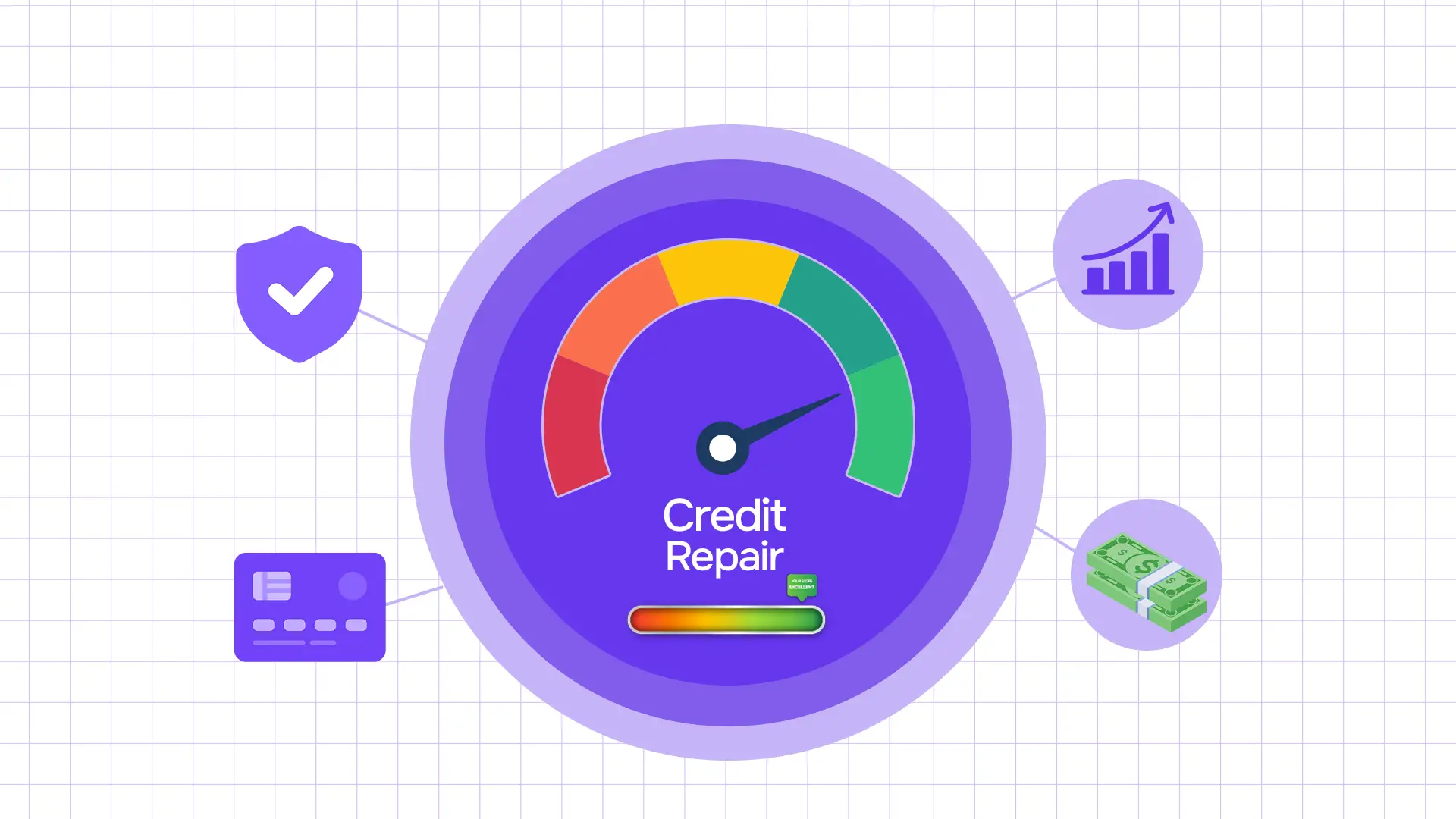
Are you struggling with a low credit score? You’re not alone—and the good news is that repairing your credit is not as complicated as it seems. With smart strategies and persistence, you can rebuild your creditworthiness. This comprehensive guide will help you discover the most effective credit repair hacks in 2025, providing actionable steps to boost your score and unlock better financial opportunities. Excited already? Let’s go!
Why Credit Repair Matters
Your credit score impacts more than just your ability to borrow money. It influences loan interest rates, credit card approvals, insurance premiums, and even employment opportunities. A higher score saves you money and improves your financial health, while a lower score can lead to costly consequences. Let’s delve into strategies that actually work.
What You’ll Gain from this Guide:
- Effective credit repair hacks tailored to 2025’s financial landscape
- Actionable steps to improve your credit quickly
- Long-term habits for sustainable credit health
Step 1: Get a Copy of Your Credit Report
Why This Matters
Your credit reportis a snapshot of your financial behavior and creditworthiness. It details your credit activity, including loans, credit card accounts, and payment history. Even small errors on your report can significantly impact your credit score, leading to higher interest rates, loan denials, or even lost job opportunities in industries where credit checks are standard. Reviewing your report helps you catch inaccuracies and prevents damage to your financial reputation.
Action Steps
- Request Your Free Credit Report: In 2025, federal law allows everyone to access their credit report for free once per year from each major credit bureau—Equifax, Experian, and TransUnion. Visit Credit Veto to obtain yours.
- Look for Common Errors: Carefully scan your report for incorrect account balances, duplicate accounts, outdated personal information, and unauthorized credit inquiries. Fraudulent activity or unrecognized debts can also harm your credit and indicate identity theft.
- Check Payment Histories: Ensure all payments marked as late or delinquent are accurate. A single incorrect delinquency can lower your score substantially.
Pro Tip
If you discover any errors, file a dispute immediately. You can submit disputes directly on each credit bureau’s website. Include documentation such as payment receipts or correspondence with creditors to strengthen your case. Under the Fair Credit Reporting Act (FCRA), the credit bureau must investigate and resolve your dispute, usually within 30 days.
Step 2: Dispute Errors Effectively
Why This Matters
Mistakes on your credit report can lower your score and cost you higher interest rates or loan denials. Correcting these errors can give your score an immediate boost.
Action Steps
- Spot Errors: Look for incorrect late payments, duplicate accounts, or accounts you don’t recognize.
- Draft a Dispute Letter: Clearly explain each error and why it’s incorrect.
- Include Evidence: Attach relevant documents, like bank statements or payment confirmations, to support your claim.
- Submit Your Dispute: Use online portals from credit bureaus or send certified mail to keep a record of submission.
Pro Tip
Check back after 30 days to confirm your dispute has been resolved. If necessary, escalate your case if the issue remains.
Step 3: Lower Your Credit Utilization
Why This Matters
Credit utilizationcontributes 30% to your credit score, making it one of the most critical factors. High credit card balances compared to your limit can hurt your score even if you pay your bills on time.
Action Steps
- Pay Down Balances: Prioritize paying off credit cards with the highest balances relative to their limits.
- Request a Limit Increase: Contact your credit card issuer to raise your credit limit—but avoid adding new debt.
- Spread Balances: If you have multiple credit cards, keeping each card’s balance below 30% of its limit improves your overall score.
Example
If your card has a $5,000 limit and a $4,000 balance, your utilization rate is 80%. Reducing it to $1,500 lowers the rate to 30%, a key threshold for better scores.
Pro Tip
Make payments before the billing cycle ends to reduce the balance reported to credit bureaus.
Step 4: Negotiate with Creditors
Why This Matters
Negotiating with creditors can lead to lower interest rates, waived fees, or even removing negative marks on your report, saving money and boosting your score.
Action Steps
- Explain Your Situation: Reach out to your creditors, detailing any financial hardship or temporary challenges you faced.
- Inquire About Programs: Ask if hardship programs or adjusted payment plans are available.
- Request Goodwill Adjustments: If you’ve recovered from late payments, appeal to your creditor’s goodwill to remove the negative entry from your report.
Script Example
“I’ve been a loyal customer for [X years]. During [specific time], I encountered financial difficulties that led to a missed payment. I’d appreciate it if you could remove the late payment as a goodwill adjustment.”
Pro Tip:Always get any agreement in writing to avoid misunderstandings or future disputes.
Step 5: Pay Off Collections Strategically
Why This Matters
Unpaid collections are major red flags on your credit report and can significantly hurt your score. Paying them off wisely can reduce their negative impact or even remove them altogether.
Action Steps
- Verify the Debt: Ensure the debt is valid and truly yours before taking any action. Request documentation from the collector.
- Negotiate Pay-for-Delete: Offer to pay the debt in exchange for the collector removing the negative mark from your credit report.
- Get it in Writing: Before paying, confirm the pay-for-delete agreement is documented to avoid future disputes.
Pro Tip
Be cautious with old debts. Acknowledging them may reset the statute of limitations, making you legally liable again. Research your rights before negotiating.
Step 6: Become an Authorized User
Why This Matters
Becoming an authorized user allows you to “borrow” the credit history of someone with good credit, boosting your score without applying for new credit yourself.
Action Steps
- Ask a Trusted Contact: Request to be added as an authorized user on a credit card held by someone with excellent payment history and low credit utilization.
- Confirm Reporting: Ensure the card issuer reports authorized user activity to credit bureaus to maximize the benefit.
Pro Tip
You don’t need to use the card to gain the credit boost. Simply being listed on the account is often enough to help your score.
Step 7: Diversify Your Credit Mix
Why This Matters
Lenders prefer borrowers who demonstrate responsible management of various credit types. A diverse credit mix improves your creditworthiness.
Action Steps
- Use a Mix of Credit Products: Combine revolving credit (credit cards) with installment credit (auto loans, personal loans, or mortgages).
- Avoid Overextending: Space out new credit applications to prevent temporary score dips from hard inquiries.
Pro Tip
Don’t take on unnecessary debt just to diversify. Focus on maintaining a positive payment history with the credit you already have.
Step 8: Pay Your Bills on Time
Why This Matters: Payment history makes up 35% of your credit score.
Action Steps:
- Set up automatic payments or calendar reminders to avoid missed due dates.
- If you miss a payment, catch up as soon as possible to minimize the damage.
Pro Tip: Even if you can’t pay the full amount, making the minimum payment keeps your account in good standing.
Bonus Hack: Leverage Credit Repair Tools and Services
Why This Matters: Professional guidance can simplify credit repair for those unfamiliar with the process.
Action Steps:
- Use apps or repair services like Credit Veto that offer personalized credit insights and automated tools to dispute errors.
- Consider reputable credit counseling services for additional support.
Conclusion
Repairing your credit requires patience and persistence, but the results are worth it. By implementing these step-by-step hacks, you can rebuild your credit score, reduce financial stress, and gain access to better financial products.
Ready to take full control of your credit journey? Sign up with credit veto, register for our free webinar and get exclusive credit repair offers. Don’t wait—build your credit and empower your financial future today!



